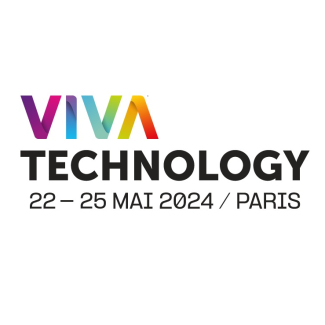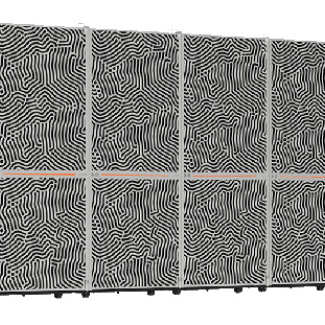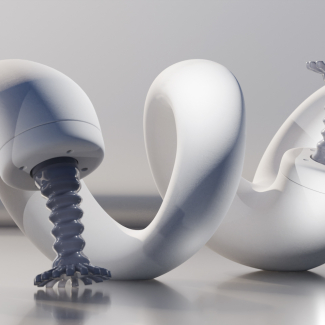
ERC Advanced Grants: CNRS in the lead among European institutions
The European Research Council (ERC) has announced the recipients of its 2017 Advanced Grants, awarded to experienced male and female researchers well known in their fields. In total, across all disciplines, 269 projects were selected, including 34 hosted in France. With its 15 winners, the CNRS leads the pack: 15% of the candidates it hosts were accepted, while the success rate for all European candidates combined was 12%.
ERC Advanced Grants target high-level researchers recognized as leaders in their respective fields. Grants can each total as much as €2.5 million over 5 years—or even €3.5 million in the event of major equipment purchases or international relocations.
Altogether, 34 French projects were selected, placing France in third place among host countries, behind first-place United Kingdom (66 projects funded) and second-place Germany (42 projects funded). The 15 winning projects hosted by the CNRS are respectively represented by 13 researchers from the CNRS, one from the Collège de France, and one from the University of Chicago. They account for nearly half of the French projects selected. These results rank the CNRS first among hosting institutions, ahead of Oxford University (14 grant recipients), and ETH Zurich (10 recipients). The projects address topics in the biological sciences, ecology and environmental science, the social sciences, mathematics, physics, nuclear and particle physics, and astronomy.
Find out more about the 15 winning CNRS projects:
3DEpi Project
Objective: To understand, using a drosophila model, the molecular bases of the epigenetic transmission (i.e., independent of DNA sequences) of hereditary traits. 3DEpi will also study the possibility of inducing epigenetic hereditary processes through environmental changes.
Principal Investigator: Giacomo Cavalli, CNRS researcher at the Institute of Human Genetics (CNRS / University of Montpellier).
Basilic Project
Objective: To use innovative approaches of integrative biology to unravel how lymphocytes process an array of molecular signals arising from contact with dendritic cells, thereby better understanding the mechanisms that underlie immunity and how they are altered in disease states.
Principal Investigator: Bernard Malissen, CNRS researcher at the Centre d'Immunologie de Marseille-Luminy (CNRS / INSERM / AMU).
Damic-M Project
Objective: To perfect the design of light dark matter particle detectors unmatched in their sensitivity. Experiments will be conducted in the Laboratoire Souterrain de Modane (CNRS / Université Grenoble Alpes).
Principal Investigator: Paolo Privitera, researcher at the University of Chicago and the Laboratoire Physique Nucléaire et Hautes Énergies (CNRS / Sorbonne University / Paris Diderot University).
Dynacotine Project
Objective: To study, at high spatial and temporal resolution, the conformational dynamics of the nicotinic receptors enabling neuronal communication in the brain, which are major therapeutic targets linked to cognition and tobacco dependence.
Principal Investigator: Pierre-Jean Corringer, CNRS researcher at the Genes, Synapses, and Cognition laboratory (CNRS / Institut Pasteur).
Dyn-Syn-Mem Project
Objective: To understand the dynamics and functional roles of synaptic plasticity in mnemonic phenomena to shed new light on the cellular bases of learning.
Principal Investigator: Daniel Choquet, CNRS researcher at the Interdisciplinary Institute for Neuroscience (CNRS / University of Bordeaux).
Focus Project
Objective: To pave the way for a new application of the optical communications cables crisscrossing the ocean floor—as a means of monitoring deformations caused by active ocean faults in seismic risk zones by harnessing laser reflectometry.
Principal Investigator: Marc-André Gutscher, CNRS researcher at the Laboratoire Géosciences Océan (CNRS / Université de Bretagne Occidentale / Université Bretagne Sud).
Genesis Project
Objective: To elucidate the natural conditions necessary for the nucleosynthesis of very heavy elements found throughout the universe by recreating these conditions in the laboratory with new-generation ultraintense lasers.
Principal Investigator: Julien Fuchs, CNRS researcher at the LULI laboratory (CNRS / CEA / École Polytechnique / Sorbonne University).
HyArchi Project
Objective: To study a cereal model—namely, corn—in order to understand how the architecture, hydraulic properties, and environmental plasticity of the root system contribute to the plant's water absorption and drought resistance.
Principal Investigator: Christophe Maurel, CNRS researcher at the Biochimie et Physiologie Moléculaire des Plantes laboratory (CNRS / INRA / University of Montpellier / Montpellier SupAgro).
ORISEM Project
Objective: To lay the groundwork for a general theory (“Super Semantics”) that will offer a comparative analysis of meaning in language (spoken and signed languages), in gestures, in music, and in primate communication, and will probe the cognitive and evolutionary origins of these diverse semantic systems.
Principal Investigator: Philippe Schlenker, CNRS researcher at the Institut Jean Nicod (CNRS / EHESS / ENS) and Global Distinguished Professor at New York University.
Plast-Evol Project
Objective: To understand the first steps in the evolution of photosynthetic eukaryotes and the impact plastidial endosymbioses (involving cyanobacteria or unicellular algae) had on the genomes of these organisms that are critical to the functioning of ecosystems.
Principal Investigator: David Moreira, CNRS researcher at the Écologie, Systématique et Évolution laboratory (CNRS / Paris-Sud University / AgroParisTech).
SeisMaze Project
Objective: To perform massive analysis of seismic tremors—weak but long-lasting signals—to develop methods combining analytical procedures and statistical modeling. This project will enable the study processes of slow deformation, a signature of the accumulation of energy in active geologic systems that can be released during major earthquakes or volcanic eruptions.
Principal Investigator: Nikolai Shapiro, CNRS researcher at the Paris Institute of Globe Physics (CNRS / IPGP / Paris Diderot University).
Self-Control Project
Objective: To acquire a better understanding of two modes of tissue morphogenesis (the dynamic processes leading to the emergence of functional form in an embryonic tissue)—one associated with programmed genetic coordination and the other dependent on self-organization through mechanical interactions.
Principal Investigator: Thomas Lecuit, professor at the Collège de France and researcher at the Developmental Biology Institute of Marseille (CNRS / AMU).
Shadoks Project
Objective: To develop artificial “ionic machines” for active manipulation and control of ion and fluid transport through nanometric channels, thereby imitating the functions of ionic machinery found in nature.
Principal Investigator: Lyderic Bocquet, CNRS researcher at the ENS Laboratoire de Physique Statistique (CNRS / ENS / Sorbonne University / Paris Diderot University).
SOS Project
Objective: To develop tools of mathematic analysis for description of the dynamic systems originating in natural physical models, which have hitherto defied rigorous study due to the presence of singularities.
Principal Investigator: Viviane Baladi, CNRS researcher at the Institut de Mathématiques de Jussieu–Paris Rive Gauche (CNRS / Sorbonne University / Paris Diderot University).
Trenscrybe Project
Objective: To create a new platform for quantum simulation of interacting spin networks that uses trapped circular Rydberg atoms.
Principal Investigator: Michel Brune, CNRS researcher at the Kastler Brossel Laboratory (CNRS / Collège de France / ENS / Sorbonne University).

